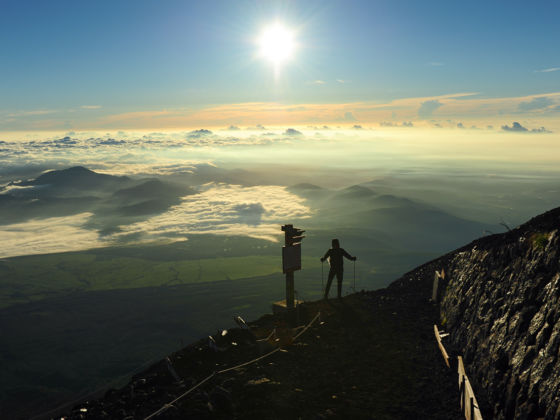Picture Japan and you probably picture the urban, the bright lights and busy streets of Tokyo, perhaps. But most of the country couldn’t exist further from this image — 95% of the land is undeveloped, an untamed archipelago of active volcanoes, dense forests, and snow-covered mountains. A trip from tip to tip takes you from tropical beaches to powdery ski resorts, and volcanic jigokudani, or hell valleys, smoke and steam along the way. Naturally, everyday life here is entwined with Mother Earth, and whether you like to dive, hike, or paddleboard, it’s easy to develop a lengthy list of dream adventures in Japan.
But with a country as expansive as this — nearly 2,000 miles from top to bottom — dream lists can often remain just that. Luckily, ANA (All Nippon Airways) flies to some 50 airports in Japan, meaning adventurous travelers aren’t confined to major metropolises. As well as taking you to your destination in style and comfort, ANA even gives you a heads up about what you might see from the airplane window during your flight. Bird’s-eye views of the Japanese Alps, the golden coastlines of Okinawa, or Mt. Fuji rising above the clouds just might inspire your next adventure.
In that same vein, here are eight ideas to get you dreaming of an epic outdoor adventure in Japan.
1. Floating through Takachiho Gorge

Photo: Shutterstock/Norimoto
Fly to: Miyazaki
Gliding across the emerald waters of Takachiho Gorge in Miyazaki, it’s easy to imagine you’ve stumbled on the inspiration for most of Hollywood’s fairy-tale, CGI-animated landscapes. Basalt columns said to be reminiscent of dragon-scaled skin stand tall, creating an Avatar-like scene — complete with the requisite gushing waterfall spilling into the calm waters of the Gokase River below.
Rowboat rentals are available to anyone who wants to admire the 55-foot Minainotaki waterfall from below, while the nearby walking trail ends at the gates of the Takachiho Shrine.
2. Climbing Mt. Fuji

Photo: Shutterstock/Nackoper
Fly to: Tokyo
Summitting Mt. Fuji is quite possibly the pinnacle of Japan’s outdoor experiences. Challenging climbers with rocky paths, substantial elevation, and fickle weather, the 12,388-foot landmark provides an opportunity to test not only hiking prowess but also true climber camaraderie. Rest huts, much-needed benches, and even occasional queues offer opportunities to meet fellow adventurers.
Climbers are greeted by the Okumiya Shrine at the summit and can take in the views before beginning their descent. If timing allows, try to get to the top for sunrise.
3. Swimming with manta rays off Ishigaki
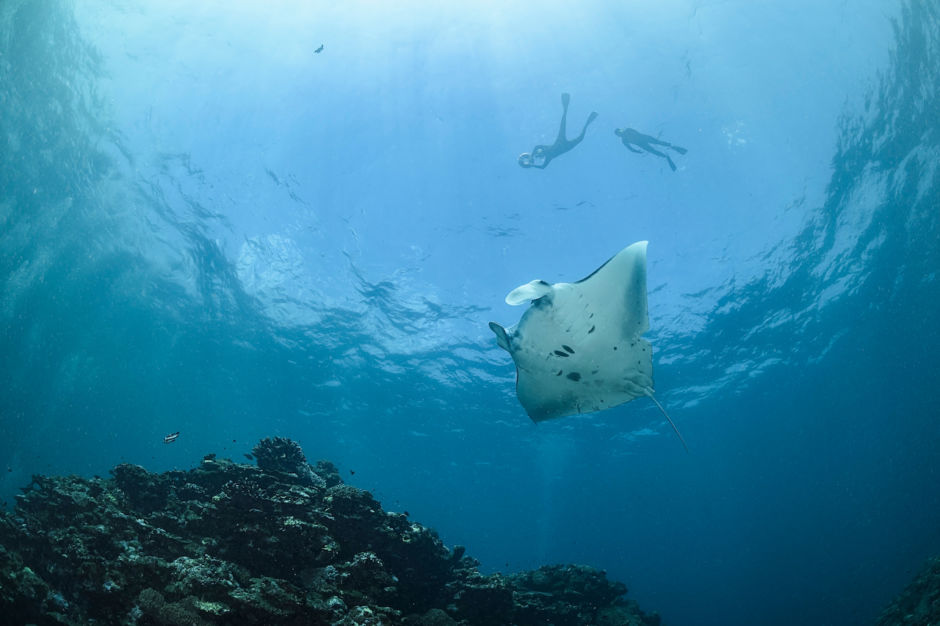
Photo: Shutterstock/Martin Voeller
Fly to: Ishigaki Island
The Yaeyama Islands, the tropical isles of Japan south of Okinawa, are home to abundant sea life and attract divers, snorkelers, and swimmers to their underwater wonder world. As well as traditional scuba-diving opportunities, Ishigaki — the main island in this group — is known for the sweeping shadows of its reef manta rays.
With only five boats at a time permitted in the most popular spots, divers can swim alongside the local inhabitants without fear of crowding them. A rare opportunity to see rays up close, it’s an unforgettable experience in a beautiful location.
4. Summitting Mt. Rishiri
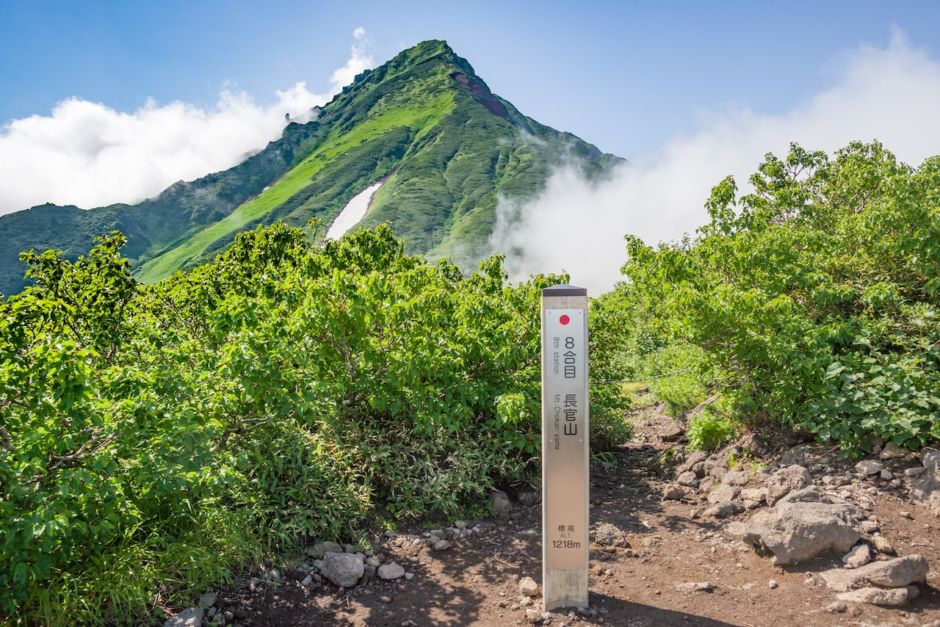
Photo: Shutterstock/Rayints
Fly to: Rishiri Island
Nicknamed “Rishiri Fuji” thanks to its resemblance to Japan’s most iconic peak, the summit of Mt. Rishiri takes a full day to reach. Located on a remote island 12.5 miles from the mainland of Hokkaido, the mountain is not quite half Fuji’s size, at just over 5,500 feet tall.
From June to August alpine flowers blanket the island, adding a spring-like feel to this coldest region of Japan. For those preferring pedals over boots, there’s a dedicated cycling road tracing nearly 38 miles of the island’s outskirts, taking you past quiet fishing villages and quieter hot springs, all with the view of Mt. Rishiri looming in the distance.
5. Ice fishing and camping in Hokkaido
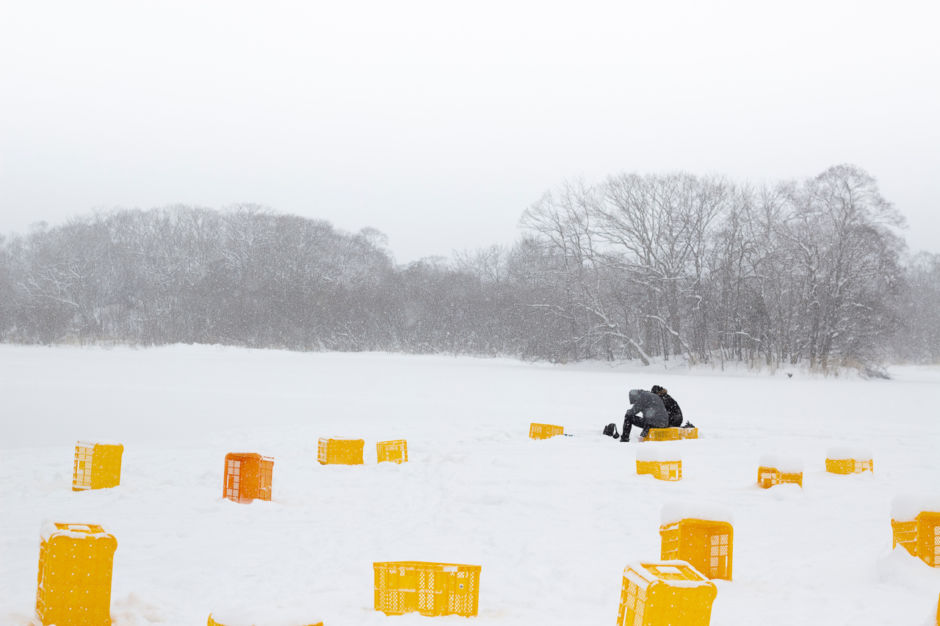
Photo: Shutterstock/Anochastock
Fly to: Sapporo
Requiring patience, warm clothing, and a love of snowy landscapes, ice fishing is a seasonal highlight on the northern island of Hokkaido. Known for snow festivals and skiing, the island also has rivers that freeze over for almost half the year, allowing locals to turn to a relaxing pastime.
Dipping bait through carefully drilled holes in the frozen surface, the dedicated can catch enough small wakasagi (smelt) for a simple grilled lunch — probably the freshest meal you can get in a country renowned for the freshness of its cuisine. The Barato River is only half an hour from Sapporo and a great place to start, with colorful ice fishing tents and crates adorning the water’s solid surface in winter.
6. Hiking Mt. Misen
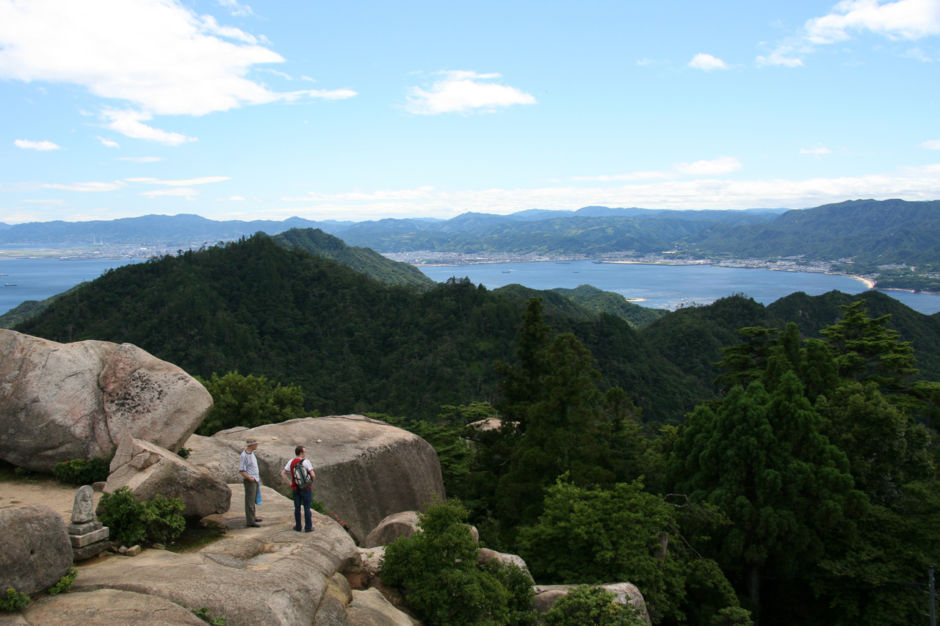
Photo: Shutterstock/Sam DCruz
Fly to: Hiroshima
Rising above the spiritual island of Miyajima in Hiroshima, Mt. Misen rewards hikers with stunning views across the Seto Inland Sea. Included in the vista is the famous floating torii gate of Itsukushima Shrine, serene at the water’s edge below.
With an elevation of 1,600 feet (straight out of the sea), the mountain has three trails covered with both temples and deer — as well as the occasional monkey. Mt. Misen is awash with cherry blossoms in spring and golden leaves in autumn (especially on the steep Momijidani trail), seasonal subtleties warranting return visits.
7. Paddleboarding and canyoning in Okutama
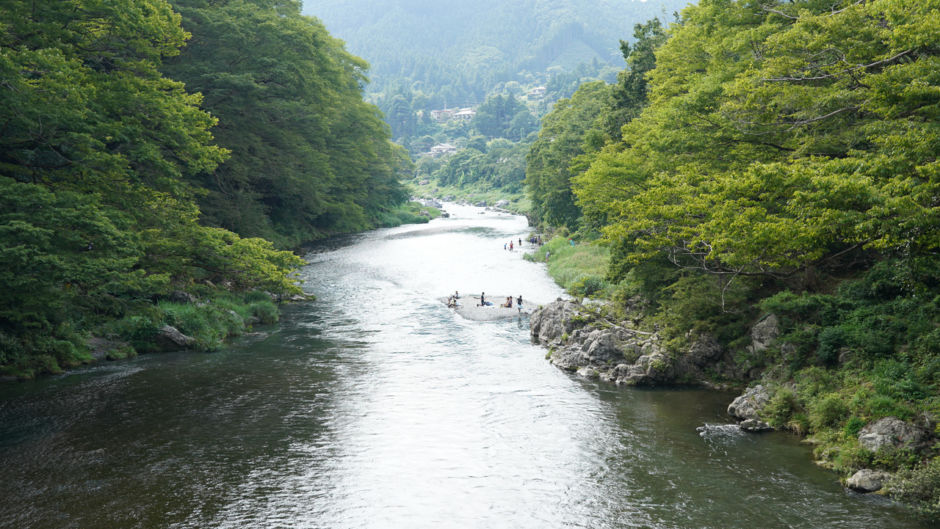
Photo: Shutterstock/Stossi Mammutto
Fly to: Tokyo
Technically in Tokyo but a far cry (and a two-hour train ride) from the neon streets of the capital, Okutama is a western suburb and forest town where the list of things to do reads more like that of a national park. Here you climb mountains, navigate lakes and rivers, and wander through caves.
The clear Tamagawa River is lined with rapids and sleek limestone, combining to create some epic canyoning options. For beginners seeking a thrill, zip lines will guide you through rushing currents and into pools, while the more experienced can rappel down steep walls, launch off higher jumps, and work the ropes. Alternatively, paddleboards and kayaks offer an opportunity to take in the scenery at a more relaxed pace. The river opens up in the Mitake-Keikoku Valley for some pretty epic views.
8. Exploring Mt. Koya and the Kumano Kodo Trail
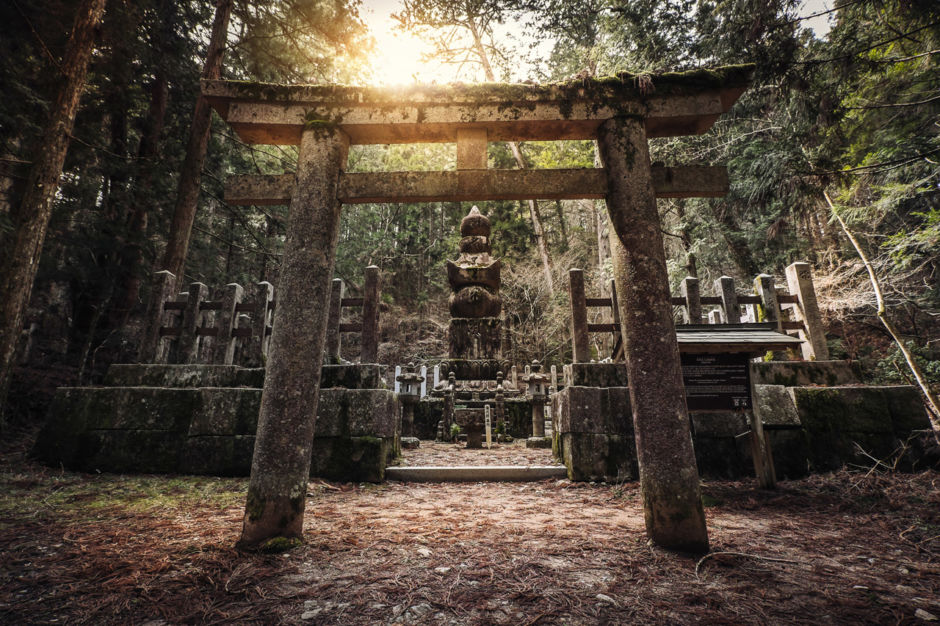
Photo: Shutterstock/Sabino Parente
Fly to: Osaka
Mist-covered and serene, the town of Koya — sitting at the foot of the mountain of the same name — is a prime stopping point on the sacred Kumano Kodo pilgrimage route. Snaking across the Kii Peninsula, this network of trails connects the Kumano Sanzan, three powerful shrines that are among the most important in the country.
Over the centuries pilgrims have crossed the mountains by foot, enduring challenging conditions to deepen their faith, and many continue to do so today. Winding through ancient forests, the journey is rewarding regardless of your beliefs and the perfect opportunity to experience the Japanese art of shinrin-yoku, or forest bathing. Because in Japan, epic adventures come in all speeds.

